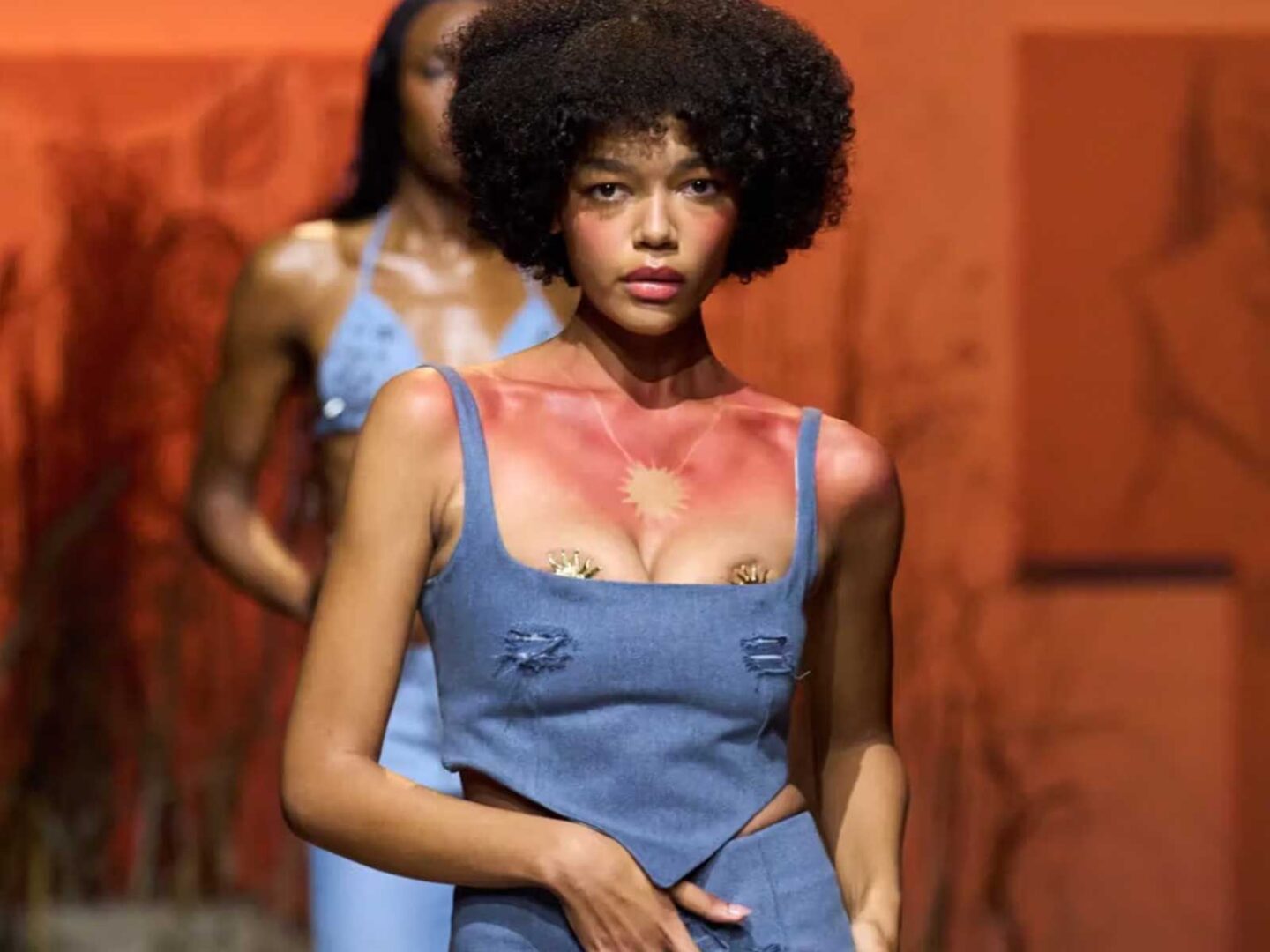In an age where SPF is more important than morning coffee and where talk of retinol is no longer the preserve of dermatologists, there’s a trend that seems to be straight out of the golden days of MySpace and Abercrombie’s 2013 campaigns: simulating sunburn as a summer accessory.
Yes, we’re talking about sunburn blush and fake tanlines. Putting on make-up to look slightly sunburnt is apparently TikTok’s new aesthetic fetish. A nostalgic nod to the summers of the early 2000s, where the redder and more sun-kissed you were, the more ‘desirable’ you looked. Remember those campaigns where a tan was synonymous with status? Well, they’re back.
The trend wasn’t born on TikTok, but that’s where it has reached its most viral point. We’ve seen it reinterpreted by beauty profiles, archive beauticians, and even celebrities like Sabrina Carpenter and Addison Rae, who have flirted with this solar imaginary that mixes youth, eternal summer and a certain calculated carelessness.
On a technical level, it’s all about applying blush in strategic points to simulate that post-beach reddish tone. Some draw the classic strap lines with light concealer or bronzer, others even use stencils and spray tan to recreate bikini marks. Although the damage is simulated, the gesture has symbolic weight: turning a sunburn into a look implies resignifying something that, in real life, is linked to skin deterioration, premature ageing and even cancer.
And that is where TikTok explodes. For every user who applauds the trend as a harmless aesthetic game, there is another who questions it from a skincare ethics perspective: do we really want to make aspirational something that we have been trying to eradicate for decades? Is it responsible to romanticise sun damage, even if fictitiously? Criticism comes not only from the dermatological world. Many voices accuse this aesthetic of trivialising the real effects of the sun on certain bodies.
Beyond the health debate, there is a cultural reading that is impossible to ignore: tanned skin continues to function as a symbol of leisure, privilege and aesthetic belonging. It is an imaginary that goes back a long way: from the 1920s, when Coco Chanel accidentally made tanning cool, to the campaigns of the 2000s where the golden ‘glow’ was the uniform of desire.
If you understand that this look is a performance, an aesthetic simulation without medical pretensions, and if you wear it knowing that real sun damage is not a game, go ahead: play with the blush, mark your fake lines, live your sunkissed fantasy from the make-up. But if, when you look in the mirror, you think that red mark looks sexy when it’s real… stop. Because neither Y2K nostalgia nor likes justify putting your skin at risk. And remember: no trend deserves to land you in the dermatologist’s office.
Sigue toda la información de HIGHXTAR desde Facebook, Twitter o Instagram
